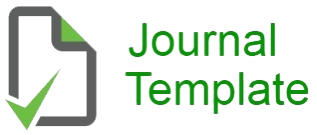ANALYSIS OF SEVERAL FACTORS THAT INFLUENCE THE PRODUCTION VALUE OF THE WOVEN CRAFT INDUSTRY IN GIANYAR REGENCY
Keywords:
Value, Industrial Production, Weaving Crafts, Gianyar Regency.Abstract
The industrial sector has a close relationship with production activities, so that building a good industrial situation requires continuous planning and supervision. By paying attention to the determining factors that influence the production process, it will make running an industry easier. The aim of this research is to analyze working capital, labor and technology on the production value of the woven craft industry in Gianyar Regency. This research uses primary data with a quantitative approach obtained from interviews. The population in this study was 65 woven craft industry business units using the entire population as a sample. The sample collection method used was a saturated sample. Data analysis techniques use descriptive statistical analysis, double log regression analysis, Cobb-Douglas production function equation. The results of this research show 1) working capital and labor simultaneously have a significant effect on the production value of the woven craft industry in Gianyar Regency. 2) working capital and labor partially have a positive and significant effect on the production value of the woven craft industry in Gianyar Regency. 3) there is a technological mix of capital and labor on the production value of the woven craft industry in Gianyar Regency. The implication of this research is that the efficiency of production factors plays an important role in an industry, where an industry expects the maximum possible production by spending or using the minimum possible production costs.
References
Amlauni, MN, Suswandi, PE, & Adenan, M. (2018). Analysis of Production Value in the Handicraft Industry in Tutul Village, Balung District, Jember Regency. e-Journal of Business Economics and Accounting. 5(1), p. 58-63.
Andriyani, D., & Susanti, A. (2019). Factors that Influence the Production Value of the Furniture Industry in Jeumpa District, Bireun Regency. Indonesian Journal of Economics. 8(2), p. 48-56.
Arif, M. Nur Rianto. 2010.Basics of Sharia Bank Marketingh. Bandung: CV. Alphabet
Central Bureau of Statistics. (2022). Bali Province in Figures 2022. BPS Bali Province. Denpasar.
Bali Province Small and Medium Enterprise Cooperative Service. Data on Total Investment Value and Total Production Value in the Bali Province Woven Industry. (2022). Bali
Gianyar Regency Industry and Trade Service. Data on the number of woven businesses per sub-district in Gianyar Regency. (2022). Gianyar.
Mursalini, WI (2019). Analysis of the Influence of Labor and Working Hours on Tofu Production in Solok City. Journal of Management and Entrepreneurship. 10(4), p. 1-8.
Rahmah, AN, & Sugeng, W. (2019). The Role of the Processing Industry Sector in the Economy in Indonesia with an Input-Output Approach in 2010-2016. Journal of Economic Sciences. 1(1), p. 14-37.
Silvia, L., & Budiana, DL (2017). Analysis of Production Scale of Labor, Capital and Raw Materials for Bamboo Woven in Bangli. EP Unud E-Journal. 6(12), p. 2463-2491.
Sugiyono. (2021). Educational Research Methods Quantitative, Qualitative and R&D Approaches. Bandung: Alphabeta.
Sukirno. 2008. Microeconomics: Introductory Theory. Third Edition. Jakarta: PT Raja Grafindo Persada.
Suparmoko, M. 2002. Public Economy, for Regional Finance and Development. Yogyakarta: Andi
Udiana, NWPP, & Sudibia, IK (2017). Analysis of the Income of Jewelry Craftsmen in Celuk Village (Comparative Study of Silver Craftsmen and Alpaca Craftsmen). EP Unud E-Journal. 6(8), p. 1453-1482.
Widyastiti, NKW, & Karmini, NL (2021). The Influence of Work Experience and Working Hours on Production and Profits of the Wooden Sculpture Carving Craft Industry in Ubud District, Gianyar Regency. EP Unud E-Journal. 10(3), p. 1272-1300.
Winarsih., Baedhowi., & Bandi. (2014) The Influence of Labor, Technology and Capital in Increasing Production in the Pati Regency Salt Processing Industry. Independent Human Education Journal. 3(1), p. 88-98.
Downloads
Published
Issue
Section
License
Copyright (c) 2024 INTERNATIONAL JOURNAL OF ECONOMIC LITERATURE

This work is licensed under a Creative Commons Attribution-NonCommercial-ShareAlike 4.0 International License.
INTERNATIONAL JOURNAL OF ECONOMIC LITERATURE © 2023 by Adisam Publisher is licensed under CC BY-SA 4.0







